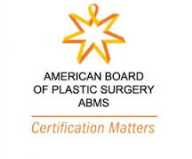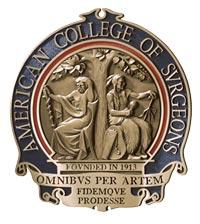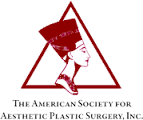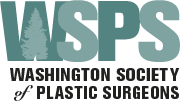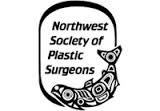Gynecomastia & Male Breast Reduction FAQ

ETIOLOGY
Are there any herbs or plants that can cause gynecomastia?
A 2007 study in “The New England Journal of Medicine” determined that repeated topical exposure to the oils of the herbs lavender and tea tree were responsible for prepubertal gynecomastia in three boys. A 2001 report in the “Singapore Medical Journal” described a man whose gynecomastia developed after he had consumed pills containing the Chinese herb ‘dong quai’, or ‘angelica’. Certain herbs with phytoestrogenic properties may mimic estrogen’s effects on the body, including increasing breast tissue. Such herbs include red clover, alfalfa, licorice, saw palmetto, ginseng and black cohosh.
Will smoking marijuana cause gynecomastia?
Maybe. Marijuana contains THC (delta-9-tetrahydrocannabinol), which has been shown in animal studies to have negative effects on the male hormones (androgens) and to have estrogen-like effects on the body. In rodents and dogs, a dose dependent decrease in the size of the testicles and a temporary decrease in testosterone levels have been reported with heavy acute THC exposure, but such effects of chronic exposure are much less convincing. It is also possible that some of the non-cannabinoid components of marijuana smoke have an affinity to the estrogen receptor which could cause growth of the breast tissue.
Human studies linking marijuana use to gynecomastia have actually been conflicting, with one study showing an association and another case control study showing no association.
What is the cause of the increased numbers of male breast reduction surgeries noted in the last 15- 20 years?
One probable reason for the huge jump in the number of male breast reduction surgeries over the past several decades is the increased awareness of treatment options as a result of the internet revolution. Some of the increase in gynecomastia surgery is definitely related to the spike in the number of males suffering from obesity. However, there seems to be a large number of young men in their 20’s and 30’s who never had the normal resolution of the so-called ‘physiological gynecomastia’. Instead, their breast enlargement either remained the same or actually increased in size over the next few years. This persistence of breast tissue in young men may also be the result of ingestion of chemicals that are known as ’Endocrine Disruptors’, which is a class of chemicals known to contaminate our water and food supplies.
What are “Endocrine Disruptors”?
They are chemicals that cause adverse effects such as gynecomastia by interfering with the hormonal system. These substances have the ability to decrease production of certain hormones, increase the production of others; imitate hormones, convert one hormone into another; and block hormonal signaling.
What are some examples of ‘Endocrine Disruptors’?
Examples include BPA which lines many food cans and coats thermal paper used for receipts, organophosphate pesticides, lead, arsenic, dioxin, atrazine (herbicide used on corn crops), phthalates found in fragrances, all types of plastic (including plastic wrap), perchlorate, fire retardants, stain resistant coatings, as well as PFC/PFOA which is used to line non-stick pans.
Can traumatic injury to the chest cause gynecomastia?
No. Gynecomastia is never caused by trauma to the chest region. However, fatty tissue is fairly sensitive to traumatic blows, particularly if concentrated in a small area. Trauma to fat, if severe enough, can cause an indentation from death of the local fat cells.
Can soy ingestion cause gynecomastia?
Once known as the ‘new miracle food’, soy is now known to be full of phytoestrogens such as Genistein and Daidzein which mimic estrogen and thus can have a feminizing effect on males, such as gynecomastia, decreased libido, erectile dysfunction and decreased facial and body hair. The amount and type of soy that causes these effects is debatable. Although moderate intake is most likely not a cause to worry, many believe that the additive effects of the various types of phytoestrogens found in our environment can indeed be one of the main causes of the increased incidence of gynecomastia.
Is gynecomastia always associated with low testosterone blood levels?
No. Many patients seen at Seattle Gynecomastia Center have had testosterone levels checked that are well within the “normal” range.
EPIDEMIOLOGY
Has the incidence of male breast enlargement changed in the past 20 years?
Although there is no way of knowing for sure about the exact numbers of males with breast enlargement, the number of men seeking treatment has risen at a faster rate than most other cosmetic surgeries. At Pratt Plastic Surgery, we have noticed a definite increase in the number of male patients seeking treatment for their enlarged breasts and/or ‘puffy nipples’ over the past few years
Isn’t it normal for some boys to develop a small degree of gynecomastia in their early teens?
It has been traditionally estimated that 50-75% of boys will develop so-called ‘physiologic adolescent gynecomastia’, where an isolated subareolar lump may be present during puberty. It is considered normal for this condition to resolve within 2 years of onset.
Is gynecomastia seen only in puberty and adulthood?
No, Breast enlargement occurs quite often in both male and female babies in the first month or so of life, and is thought to be associated with maternal estrogen which crosses the placenta prior to birth. This ’neonatal gynecomastia’ seen in male babies generally resolves by 4-6 weeks following birth.
Interestingly, ‘neonatal gynecomastia’ does not occur in children who are born prematurely.
DEFINITION
What is the “official” scientific definition of gynecomastia?
One of the greatest areas of confusion that exists when discussing male breast enlargement is the definition of gynecomastia. In many cases, the term gynecomastia is used in the generic sense, meaning an enlarged male breast of any kind. In other cases it may refer to ‘puffy nipples’ without any generalized chest enlargement.
A third common use of the term gynecomastia, particularly amongst plastic surgeons and their patients, refers to an isolated, rubbery enlargement of the breast gland lying beneath the nipple and areola, with or without diffuse fatty enlargement of the remainder of the chest.
Classically in the surgical literature, this fibrous tissue has been termed gynecomastia if it is 2cm or wider in diameter.
Is “Pseudo-gynecomastia” a useful term in describing male breast enlargement?
This term is generally used to describe a diffuse fatty breast enlargement of the male chest that contains absolutely ‘no breast tissue’. In Dr. Pratt’s experience, this condition is quite rare. When examined carefully, essentially all cases of breast enlargement (including overweight patients) seen by Dr. Pratt will have a “gritty” feeling to the affected tissue which is quite similar to the way a female breast feels, and quite different from the texture of normal subcutaneous fat. Following liposuction of this tissue, there are almost always at least some scattered areas containing strands of residual fibrous stromal breast tissue which is similar to the subareolar fibrous tissue.
Also, there is no known physiologic or anatomic explanation of why the male body would create such a targeted deposition of bilateral ‘chest fat’ in the exact distribution of the female breasts.
Finally, although female breast is certainly a fatty organ, but no one would ever suggest that it is just a large deposition of fat and not a breast.
GENERAL
Can gynecomastia turn into cancer?
Although there is no proof of a causal relationship between gynecomastia and male breast cancer, it is known that any condition which results in excess estrogen (female hormones) relative to androgens (male hormones) increases the risk of both benign (gynecomastia) and malignant (cancer) growth of male breast tissue. Examples of risk factors for such abnormal growth of male breast tissue would include aging, obesity, alcoholism, liver disease, estrogen treatment for i.e. prostate cancer, and Klinefelters syndrome.
What are some of the warning signs that a more serious problem than gynecomastia may exist?
If you notice any type of irregular breast mass, particularly if it is found on one side, not directly beneath the areola, bleeding from the nipple, or unexplained pain you should seek medical attention in order to avoid missing some other type of serious condition.
Can gynecomastia be present without one knowing it?
In many cases, a patient will gradually develop fatty breast enlargement which diffusely involves the majority of the anterior chest. These patients may not be aware of it because it develops so gradually. Gynecomastia can be missed, especially if the patient is overweight and in cases when there is minimal subareolar fibrous tissue.
Often, patients with ‘puffy nipples’ will come in wanting them to be corrected, not realizing that enlarged underlying male breast tissue is actually causing enlarged, ‘puffy’ nipple areolar complex (the nipple and surrounding pigmented skin). Breast tissue growth is usually gradual, so it often is not noticed until it becomes quite severe.
Patients with well-developed ‘pectoralis’ muscles may also have significant gynecomastia that is mistaken for enlarged muscles.
What is the difference in the feel of the breast with “True” versus “Pseudo-Gynecomastia”?
With so-called ‘Pseudo-gynecomastia’, the breast feels soft and homogenous throughout, much like a similarly sized female breast. In contrast, ‘True’ gynecomastia will feel like a firm, well defined disk of tissue directly beneath the areola and surrounding skin. The majority of patients seen at Seattle Gynecomastia Center have a combination of both diffuse fatty enlargement as well as varying amounts of fibrous subareolar tissue.
How do I tell if my breast enlargement is caused by fatty tissues or breast tissue?
In general, breast tissue has a firmer consistency than the fatty component. If the breast is large, it might be difficult to feel this firm tissue however it becomes more evident following liposuction of the fatty component.
Are mammograms performed on men?
Yes. Whenever the diagnosis of breast cancer is entertained, a mammogram should be performed and used as part of the complete evaluation of a suspicious area of breast tissue.
Does insurance pay for male breast reduction surgery?
Although, it is well known that a male’s psychological health can be severely affected by gynecomastia and improved with surgical treatment, in our experience, patients have not been successful in getting their insurance companies to pay for male breast reduction surgery of any kind.
Also, male breast reduction surgery is no doubt a ‘reconstructive’ procedure in the sense that it restores the normal form of the body. Thus, an argument could certainly be made that insurance companies should pay for male breast reduction surgery, since other forms of reconstructive surgery are generally covered by most insurance company plans.
How old is too old to have male breast reduction surgery?
There is no age limit on undergoing male breast reduction surgery. The most important factor in the evaluation of a patient for surgery is their current medical health. Patients with diabetes, heart problems, or high blood pressure, kidney or liver problems may not be good candidates, depending on the severity of their disease and how well it is controlled. A seventy-year-old patient with no medical problems is a better candidate for surgery than a 40-year-old with poorly controlled diabetes.
What is a “Clamshell Deformity”?
The semilunar or peri-areolar scar is purposely avoided by Dr. Pratt, since it often results in an unnatural ‘clam shell’ deformity, with scar shortening that results in flattening of the lower half of the areolar outline, which can be a ‘dead giveaway’ that surgery was performed.
Do I need to have skin removed to reduce the size of my areolas?
In most cases no. Removal of the underlying breast tissue usually results in a significant shrinkage of the skin which is known as contraction. This is especially true when ‘puffy nipples’ are treated with liposuction and ‘Stealth’ gland excision. If the skin is severely stretch damaged, there is a possibility that the skin will not effectively shrink down, and in that case, removal of areolar skin will be required to reduce their size.
What makes one an unsatisfactory candidate for male breast reduction?
At Seattle Gynecomastia Center, the most common reason that a patient in not a good candidate for gynecomastia surgery is poor medical condition. Patients in their 50’s-70’s sometimes come in for a gynecomastia consultation and may have cardiac, pulmonary, renal or liver problems, all of which take precedence over treatment of their enlarged breasts, and in fact, may actually be the cause of their gynecomastia.
Although a patient’s weight is a difficult subject to broach, it can be quite relevant in that morbid obesity is considered a very significant risk factor for post-operative sleep apnea and wound healing problems, as well as anesthetic and respiratory complications. Patients presenting with a high BMI are counselled about the effect of their weight on the safety of the procedure, and their surgery is delayed until the BMI has been lowered to a safer level.
What is your feeling regarding the various grading systems of gynecomastia?
Because of the large variety of problems that can exist in gynecomastia patients, it is difficult for any single rating system to accurately classify all of the problems that any particular patient may have. The bottom line is that most patients do not fit into any single category of classification, thus the real usefulness of these systems is questionable.
PUFFY NIPPLES
What are “puffy nipples” caused by?
‘Puffy Nipples’ occur as a result of a buildup of breast glandular tissue right behind the nipple. This increased bulk puts pressure on the areolar skin and causes it to stretch and enlarge.
What treatment is appropriate for ‘puffy nipples?’
Direct ‘Stealth’ excision is the treatment of choice at Seattle Gynecomastia Center, along with liposuction of any diffuse breast fullness that co-exists.
Can liposuction alone be used to treat “puffy nipples”?
In most cases no, since the subareolar tissue is often very tough and resistant to liposuction.
Can “puffy nipples” occur in the absence of gynecomastia?
There is a condition called ’tuberous breast’, which is actually more common in females, but can also occur in men. A tuberous breast will generally have a larger than normal, ‘puffy’ nipple areolar complex, often with thinned out areolar skin which bulges outward, thus giving a ‘puffy’ appearance. With a ‘tuberous breast’, the appearance of ‘puffy nipples’ could occur with little or no underlying gynecomastia.
Is it possible to have puffy nipples following male breast reduction?
The most common cause for persistence of “puffy nipples” following male breast reduction surgery would be under-resection (not removing enough tissue) of the breast glandular tissue. Sometimes, an inexperienced surgeon will fail to perform gland excision along with the liposuction, and this can result in a less than satisfactory improvement of “puffy nipples”. Usually this will require a second surgery to resect the remaining glandular tissue.
TREATMENT
Is there an effective non-surgical treatment for true gynecomastia?
Medical treatments have been used to treat gynecomastia in for example, persistent pubertal gynecomastia and gynecomastia associated with prostate cancer. Effective medicines have included anti-estrogens i.e. Tamoxifen, androgens such as Danazol, as well as testosterone replacement in men with low testosterone levels.
General conclusions have been that up to 4/5’s of patients treated medically experienced reduced breast volume, but rarely was complete resolution of the gynecomastia achieved. Medical treatment has been found to be much less effective with longstanding fibrotic gynecomastia.
Other treatments tried have included local irradiation, but the results are not as good as with the medications and there is the possibility of serious side effects.
Are there any herbs or plants that can effectively treat gynecomastia?
Passion flower is felt by some to have testosterone boosting action. In a poorly designed study in 2016, passion flower was shown to increase salivary testosterone in certain individuals (some older men), but had no effect on younger men’s salivary testosterone, and blood testosterone levels were not affected in any of those studied.
Other herbs with reported testosterone-boosting properties include Turmeric sarsaparilla (aka Chinese Root), Yellow Vine (aka tribulus terrestris) and the cordyceps mushroom.
However, it should be noted that Dr. Pratt does not endorse these products in the treatment of male breast enlargement and knows of no solid evidence that they are actually effective.
What are ‘Gyne Reduction’ products?
There is a range of products that are available on the internet that claim to be helpful in the treatment of gynecomastia and ‘pseudogynecomastia’. They range from pills to creams with names like Gynexol, Gynexin and Gynectrol. These products are skillfully marketed on the internet through a maze of seemingly unrelated authoritative websites such as gynoma.com, gynoguide.com, themanlyzone.com gynecomastiatreatment.com. All of these websites interestingly circle back to sales sites promoting these same products, often featuring ‘Gynexin Reviews’. The owner of this company has payed bloggers and reviewers in the past to endorse and favorably rate their products, through a program called Target Click.
This same company also markets ‘Alexia Breast Reduction Pills for Women with Large Breasts’ as well as ‘Mammorex Breast Enhancement Pills’, which is described as a ‘natural breast enlargement pill’ for women with small breasts!
According to the Better Business Bureau there have been a high number of complaints regarding these products.
MALE BREAST REDUCTION
On surgery day, what happens?
Dr. Pratt reviews the areas to be treated with the patient, and then draws a ‘topographic map’ on their chest which serves as a guide for him during the surgery since the body appears quite different when lying supine. Both areas of liposuction and ‘Stealth excision’ will be marked, including the position of the planned incisions.
Surgery is carried out in the main operating room under general anesthesia for the patient’s comfort and safety. Once the patient is asleep, the chest and surrounding areas will be prepped and draped. Full mask, sterile gowns, gloves and drapes are used as well in order to ensure sterility during the entire procedure.
A very fine metal tube is inserted through 4mm incisions and a fluid containing adrenaline and a local anesthetic is infused in order to prevent blood loss and assure post-operative comfort. Next, a small tube is passed through the fatty breast tissue until the desired contour is achieved. Usually there will be a small amount of fibrous or gristle tissue directly beneath the areola which is removed by the ‘Stealth excision’ technique. The inframammary fold will then be released as needed.
Post-operatively the patient will be cared for and kept comfortable by our outstanding surgical staff until fully recovered from anesthesia and ready to go. The patient is discharged in the care of a responsible adult who will remain with the patient for the first 24 hours, but it is always better to have someone around for several days to help out.
Where are the scars for a male breast reduction?
Dr. Pratt feels that visible scars making it obvious that surgery has been performed, should be avoided at all costs. This philosophy is the underlying reason that liposuction and ‘Stealth excision’ are the mainstays of gynecomastia treatment at Seattle Gynecomastia Center. The scars for the liposuction are 4-5mm long and placed right in the armpit crease, so they are not visible once healed. The ‘Stealth excision’ scars are typically 2-3mm long in the areolar skin, and usually heal imperceptibly. To avoid an obvious ‘operated on’ look, these scars are purposely placed asymmetrically
How is the rubbery portion of the gland removed?
Dr. Pratt uses the ‘Stealth’ method, in which tiny incisions are made in the areola and the breast gland is removed. Gland removal reduces the bulk of the gynecomastia tissue and helps treat the puffy nipple as well.
What type of anesthesia is required for liposuction of gynecomastia?
Because most patients we treat have diffuse involvement of the majority of the chest with gynecomastia or pseudo-gynecomastia, usually a general anesthesia is required to perform a thorough suctioning of the breast tissue. However, some patients will have only a subareolar lump of fibrous breast tissue which can be removed under local anesthesia.
Are drains required in male breast reduction surgery?
For the great majority of patients treated for gynecomastia or pseudo-gynecomastia by Dr. Pratt, no drains are required. In fact, a small amount of semiliquid material in the remaining subcutaneous pocket can sometimes help even out mild irregularities in the soft tissues and also may prevent tight adherence of the underside of the areola to the underlying pectoralis major muscle.
PREOP
Is it safe to take Motrin-type medicines before and after male breast reduction?
This class of anti-inflammatory pain medications called NSAIDS can cause an elevated Bleeding Time (BT) in some patients (BT tests the blood’s clotting ability); this may explain why some patients taking NSAIDS have reported an increase in bleeding following surgery. Other forms of NSAIDS include Nuprin, Naproxen, Aleve, Naprosyn, and Ibuprofen.
Dr. Pratt recommends that patients not take these types of medications 2 weeks before and 1 week after surgery. A list of medicines, supplements and foods to avoid is given to all patients prior to surgery.
Is aspirin ok to take before and after surgery?
Aspirin is also a blood thinner in that it affects the platelets which are the clotting cells in the blood. Aspirin permanently inactivates the platelets, and thus the body is less able to control bleeding during and after surgery.
What are some of the other more common blood thinning medications to avoid before and after surgery?
Other blood thinners include Warfarin/Coumadin, Feldene, Voltaren, Orudis, Indocin Heparin/Lovenox/Enoxaparin, Clopidogrel (Plavix), Dipyridamole, Ticlid, Eliquis, Pradaxa and Xarelto.
What is the usual duration of gynecomastia liposuction with ‘Stealth excision’ surgery?
The time in the operating room is typically 2.5-3 hours. However, Dr. Pratt always takes his time and uses meticulous technique. He takes as long as it takes to produce an excellent result. Typically, only 2 surgeries are scheduled per day, thus allowing Dr. Pratt to focus his attention on each patient without rushing.
Does nipple piercing interfere with male breast reduction surgery?
All piercings of the chest, nipples and areolas can potentially increase the chance for infection following gynecomastia surgery. Piercings should be removed at least a week prior to the surgery date if possible.
POST-OP
How uncomfortable will I be following my Gynecomastia surgery?
Dr. Pratt includes a local anesthetic in the tumescent fluid that is injected during surgery. The amount of post-operative pain varies from patient to patient. However, most patients do very well on oral narcotics and a muscle relaxant following male breast reduction. Following diffuse liposuction of the breast and ‘Stealth’ gland excision, most patients report that they have a dull achy pain during the first week to ten days. Few patients will require pain medications more than 2 weeks.
For more on pain control at Seattle Gynecomastia Center, see our PainBuster Protocol.
Will I experience nausea and vomiting following surgery?
In order to minimize the discomfort that is associated with nausea and vomiting, we employ our No Nausea Protocol. You will also be given a script for a “Scop Patch”, a transdermal anti-nausea medication that you will apply several hours prior to your surgery. This drug will significantly reduce the chance of PONV (Post-Operative Nausea & Vomiting) which can cause significant discomfort.
How long does the swelling last following male breast reduction surgery?
Patients treated by Dr. Pratt will have an obvious improvement in the fullness of their chest immediately post-op. However, some swelling will usually persist for 3-6 months.
When can a patient work out after male breast reduction surgery?
It is important for the post-op patient to rest and recover without complications such as large blood or fluid collections which can lead to infection or contour irregularities, which could ruin a great result. Avoid repetitive arm and chest motions, heavy lifting, and straining or excessive trunk motion for 2 weeks following surgery.
Is infection common following male breast reduction surgery?
All patients receive antibiotics before, during and after their surgery. In our experience at Seattle Gynecomastia Center, infections are quite rare following gynecomastia surgery. Infection risk is increased if the patient develops a hematoma or fluid collection, so minimizing activity such as working out and “cardio” for a couple of weeks is important in preventing infection.
Is massage recommended following male breast reduction surgery?
Avoiding massage early in the post-op period is important. It will allow the tissues to properly mend together without being disturbed by pressure or shearing movements that can inhibit healing and lead to fluid and blood collections. After 2-3 weeks of healing time, gentle massage can be used to mobilize some of the edema fluid from the chest area by improving lymphatic drainage. Also, massage can help soften any subcutaneous irregularities.
Is it normal to detect a “squishy” sound coming from the chest region following gynecomastia surgery?
A squishy or sloshing sound is usually evidence that a significant fluid collection exists in the soft tissues. The best initial treatment for this is to minimize chest and arm activity, wear the compression vest regularly and don’t keep checking to see if the fluid is still there by pressing the tissues with your fingers, since this will often contribute to a persistent seroma.
What other treatment is there for a seroma that does not go away on its own in a week to 10 days?
A persistent seroma will inhibit healing of the tissues by keeping them apart from each other. Sometimes drainage with a needle will be needed to allow the tissues to heal together. If the seroma returns after a few aspirations, a drain may be needed to be placed for proper healing to occur.
Is there numbness of the chest after male breast reduction surgery?
Yes. Typically, the nipple and areola will have varying degrees of numbness, depending on how much work needs to be done. This usually resolves in the 1st 6 months after surgery. It is rare to have permanent numbness after liposuction and ‘Stealth excision’. A more extensive incision around the periphery of the areola has a higher probability of causing numbness.
What are the signs and symptoms of breast cancer?
Breast pain, nipple discharge or bleeding, a firm, fixed irregular, fast growing lump.
Why are dissolvable stitches used?
Suture removal is sometimes painful. In order to enhance the patient’s postoperative experience, Dr. Pratt typically uses only absorbable sutures that do not require removal.
Can male breast reduction surgery be done at the same time as another procedure?
Yes, it is quite common for patients to request liposuction of the abdomen and flanks or other procedures at the same time as their breast reduction surgery. The advantages of this would be a lower total cost, since additional procedures are discounted. Also, a single anesthetic and recovery period are good reasons to consider having multiple procedures done simultaneously.
Is a laser required to perform effective male breast reduction surgery?
Laser liposuction uses the energy of a laser beam to turn fat cells into an oily substance which is then removed with a traditional liposuction cannula. Although this technique may be effective when performed by a surgeon who is familiar with it, the downside is that laser liposuction is associated with additional risks when compared with traditional tumescent liposuction. These would include the potential for burning the skin and an increased risk of fire in the operating room.
Traditional tumescent liposuction, especially when using power assisted liposuction device, is very effective in removing the fatty portion of the male breast without the added risks that the laser brings.
Neither laser nor traditional liposuction is completely effective in removing the stubborn fibrous rubbery glandular tissue of gynecomastia, which generally requires direct excision to remove.
What is done with the tissue and fat removed during male breast reduction surgery?
The tissue and fluid removed from the breasts with liposuction is collected in sealed canisters which are picked up at the end of the day by a company which specializes in disposing of medical waste.

